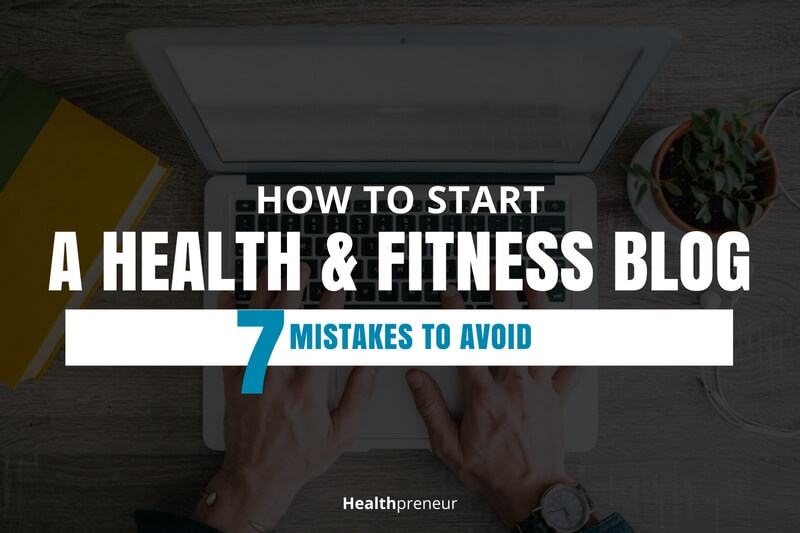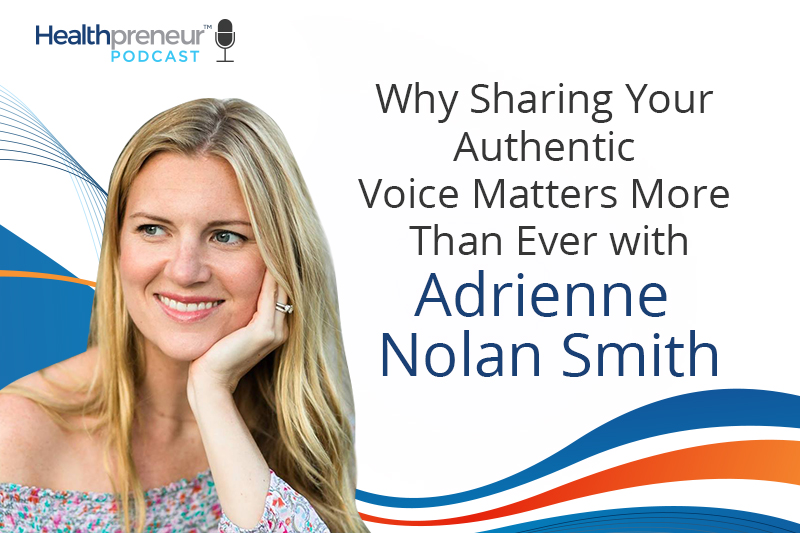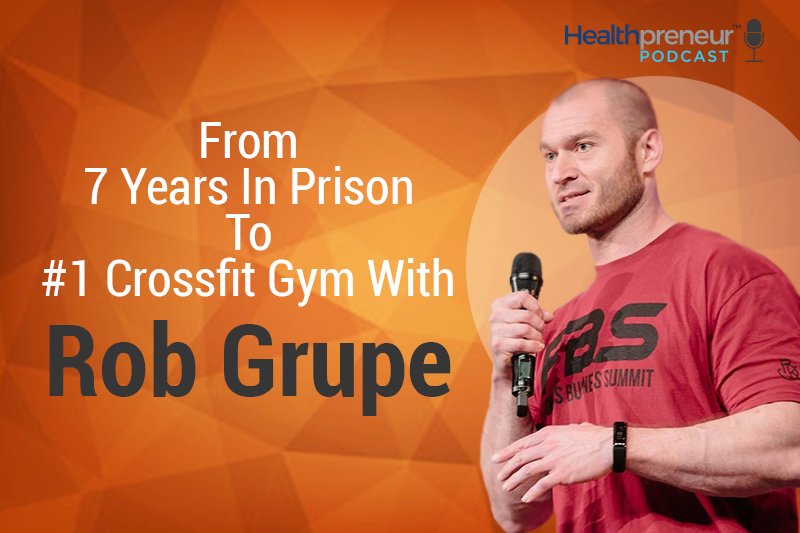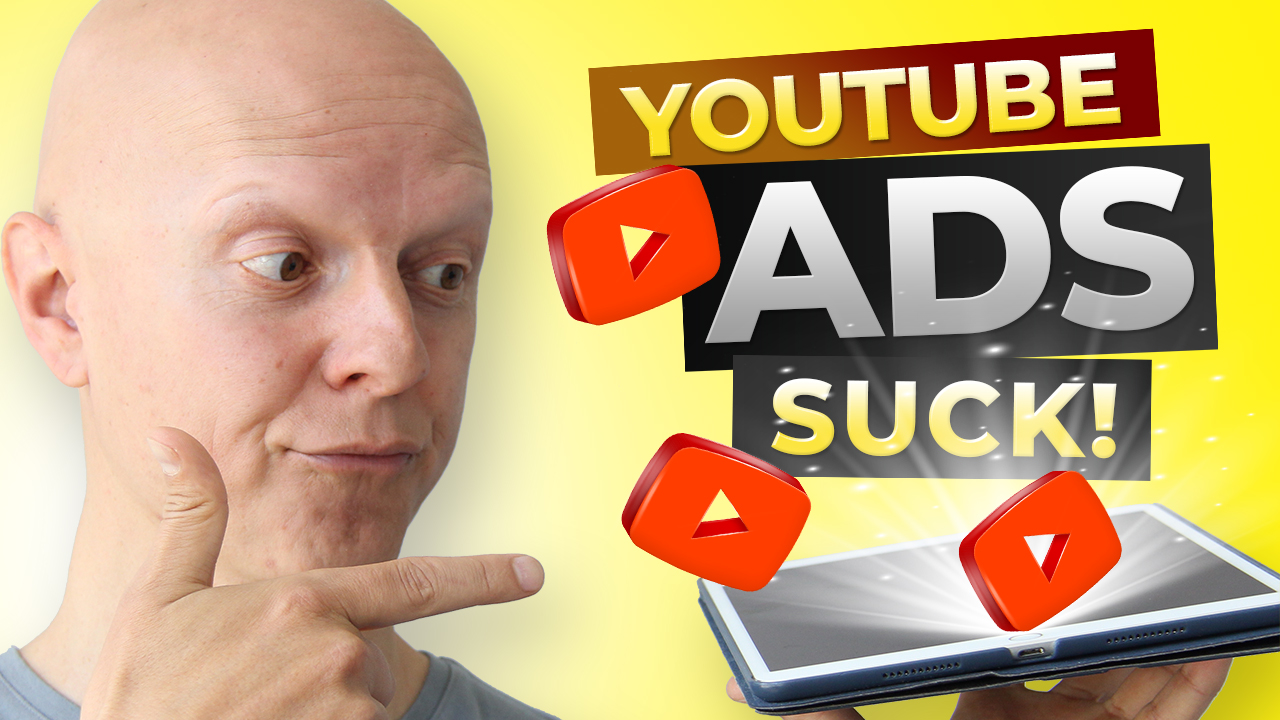How to Start a Health and Fitness Blog (7 Mistakes to Avoid)

Want to know how to start or grow a health or fitness blog?
I’m going to show you how.
Specifically, I’m going to show you 7 BIG mistakes you need to avoid. I’ve seen these mistakes time and time again and I want to help you avoid them, so that you can have an easier path to growing your online platform and business.
The reason I can share this with you is because I’ve been blogging for 11 years. 8 of those years were a waste of time because I didn’t know what I was doing.
The last 3 years have been nothing short of a miracle with my personal health blog now getting 600k unique visitors per month (and growing) while converting many of those readers into leads (11% average optin rate) and a high number of them becoming customers.
You can say we’ve “cracked the code” for content marketing and now many health and fitness experts come to me to help them create amazing content that actually makes their business money!
So, why should you develop a blog in the first place – or even a website?
Well, it’s kind of like your online storefront, and if you don’t have one, people can’t find you.
But more importantly, if you just have a website, who cares? The truth is that nobody cares about you or me – people care about themselves, specifically about their own problems.
So if you can create content for your website – to give them a reason to go to your blog – that’s going to help solve their problems, then you become their best friend. (Ok, not quite but it gets them closer to knowing, liking, and trusting you – which is very important for attracting customers).
How to Start a Health and Fitness Blog
With that said, let’s have a look at the 7 time-wasting mistakes you must avoid when it comes to starting a successful health and fitness blog.
1. Don’t Worry About the Tech
The more you worry about the technology, the less you focus on actually creating your content.
Here’s something I want you to think about:
The less you know about the tech, the better off you’re going to be.
If you can, get a web developer or someone else to set up your website and blog. The more you start to fiddle around with the html coding and all that other stuff, the further you’ll end up down a rabbit hole and wasting most of your time on menial tasks that don’t move your business forward.
Your goal as the CEO of your business is to focus on the BIG ROCKS, not the tiny pebbles.
If you can, find somebody else to handle those smaller tech issues. You can find freelancers on Upwork, or other outsourcing sites – and you don’t have to pay an arm and a leg to have somebody manage or set up your website.
If you’re designing the website yourself, another thing you may want to look at are really cool services like PageCloud, Wix, or LeadPages. Now, those don’t necessarily entail having somebody else do the work for you.
That’s you spending the time building the website for yourself but at least they’re super easy to use. And a great place to start if you’re either a rugged individualist or strapped for cash.
Again, if you have no other choice but to do the work yourself, then you may want to look at those options.
However, if you’re serious about the long term success of your business and building a great brand and web presence, then I would strongly recommend getting set up on WordPress (I like the theme from StudioPress).
I’m not going to give you a tutorial on how to set up a wordpress site. That’s not what I do.
I’m here to remind to focus on the bigger picture, the content, your offer, and other important objectives.
Leave the tech to the techies.
Focus on your gift and get it out there.
2. Don’t Try to Reach Everyone
The second big mistake you want to avoid is going broad with who you’re trying to serve. So instead of the smarter “deep and narrow” approach, you’re trying to help everyone.
Good luck with that!
You’re much better off going deep and narrow.
Believe me…I went broad and it’s very tough to compete – basically you’re competing with Dr. Oz, WebMD, and big time general health brands.
What you want to do instead is become an expert in a specific small segment of the wellness industry.
That way, it’s a lot easier to stand out above the noise and become the trusted expert to that audience.
It’s easier to get your articles and blog content ranking in search engines for smaller segments of an audience or smaller segments of this entire wellness space.
As an example, trying to rank in the search results with, “how to lose weight” is far more challenging than ranking a piece of content around, “how to overcome adrenal fatigue,” or something along those lines.
Just check out the competition for these terms…
67,000,000 results (ie. competing web pages) vs. 654,000…


Which one do you think you’ll have an easier time making a dent in?
So…get really specific and go deep on that topic area.
What that’s going to do is let Google know that your website is about a particular topic. If you can stay focused on that topic, you will become – not only in the audience’s or marketplace’s eyes, but also in Google’s eyes – the blog or the website of choice on that specific topic. That’s vital.
3. Don’t Create Boring Content
The third big mistake you want to avoid is putting out bland content.
What I mean by this is you want to exude your passion and your voice. Write what you’re passionate about, but make sure there’s also a need for what you’re passionate about in the marketplace.
I love airplanes and I could sit at the airport and watch planes take off and land all day. It would make me as happy as a pig in you-know-what to do that, but guess what? That’s not the market that I’m in.
If my passion is to write about airplanes, that’s not really going to serve my current health audience that much.
You want to find topics within your narrow deep market that you’re passionate about writing about and that your readers will find helpful.
I believe there is a time and place for what I call “Koolaid” content which is nothing more just sharing your opinions, beliefs, or positions on particular topics. Readers will see that and instantly form their own opinions: “Yeah, I agree with this,” or, “No, I don’t agree with that.”
That’s good because…
You want to POLARIZE people.
It’s very important, but also make sure that there’s a need for what you’re passionate writing about. Cool?
4. Don’t Worry About Perfect Writing
The fourth big mistake is stressing about being a great writer.
Again, this relates back to what I just talked about. You’re better just being able to communicate your passion and enthusiasm for a particular topic.
That’s why I love video.
It’s easier for me to communicate naturally and with passion and enthusiasm than it is for me to do it via writing.
Instead of fussing over sentence structure and tone, focus on your voice and your insights. Focus on your heart, your head, your ideas, your opinions – and don’t worry so much about impressing your grade 12 English teacher.
People will forgive you if you make a spelling mistake (well, actually that might not be true but who cares about those perfectionists).
5. Don’t Skip the Planning and Research
Being completely spontaneous and spur-of-the-moment can be a big mistake.
It’s kind of like, “I have an idea and I’m going to write about it now.”
Amateurs write only when they are inspired. Pros get the work done based on a schedule.
Schedule gives you structure – and when you have a structure, you have freedom. When you have structure you feel less overwhelmed and when you feel less overwhelmed you don’t dread writing or procrastinate about it. Writing becomes just part of the process.
Research the topics that you want to write about and that your audience actually cares about (remember what I said earlier).
To find out what they need help with you can ask them a simple question:
“What’s your #1 challenge with x?”
For instance:
- What’s your #1 challenge when it comes to losing weight?
- What’s the #1 obstacle standing in your way of eating healthy consistently?
- What’s the #1 thing holding you back from working out?
If you’ve got a Facebook page or a Facebook group, ask them questions about their obstacles and issues. Their answers are the fuel for content that actually serves them. What a thought right?
As a smart next step, I would cross reference their answers with some basic keyword research to ensure you’re creating content around keyword phrases that aren’t too competitive and that other people are also searching for.
Google Keyword Planner is a free keyword research tool that you can look at keyword phrases to look at which ones are super competitive. Those are the ones you want to stay away from.
Instead, choose keywords that are less competitive, but still have a decent amount of search. Go after the long-tail keywords.
For instance, don’t go after, “lose weight” or “weight loss.” Instead, focus on, “how do I lose weight after giving birth.”
That’s a long-tail keyword, and that reaches a very motivated person who’s going to want a solution to that specific question.
Here’s an example of a keyword (weight loss) you would NOT want to create content around:

Notice the HIGH competition – that’s an immediate red flag.
So, do your research. Ask your audience what their number one obstacle or challenge is. Then cross reference that with keyword research match in Google keyword planner, looking for terms that have low competition and a relatively high search number. And then, plan your content accordingly.
If you’re publishing one post a week, you can just set up a simple spreadsheet as your content calendar.
Alternatively, you can click here to download my free content calendar and use that. Using a spreadsheet will help give you structure and streamline your planning process so you are working ahead of schedule
In our business, our content is mapped out for the next six to nine months.
That means I don’t have to think about it. I know exactly what’s being published on Dec. 21, March 3, or April 14, etc…
Now, you don’t have to take it to that level, but having a basic structure will give you a plan and focus. And with this structure, you regain your freedom ????
6. Don’t Forget to Promote Your Content
This doesn’t pertain only to health and fitness, but to all blogging and content creation in general.
Most bloggers focus more on creating than promoting their content.
But like with anything, promotion – or marketing – really makes the world go round.
Let’s be very honest, first you have to have an amazing product. In this case, the product is your content. The better your content is, the easier the promotion becomes.
It should be obvious that you need to write an amazing, be-all and end-all piece of content that people naturally are like, “Oh my God. This is unbelievable. I’m going to share this on Twitter, Facebook, and everywhere else.”
That’s part of the promotion. That’s passive promotion, though.
What you want to do is reach out to other blogs and influencers and tell them: “We just created this. I would love to have it featured somewhere.” (not in those exact words but you get the idea).
Or you could be a guest on a podcast, and have a link from that podcast’s show notes back to the piece of content. That’s a backlink that Google’s going to see as valuable.
The promotion is massively important.
There are lots of ways to promote your content. We don’t have to get into them here but here’s a quick rundown of a few of them:
- Post your content to Facebook (and boost if possible)
- Reach out to other influencers who may find your content valuable to share with their audience
- Mention your post/content on a podcast interview with a link back to the content
- Create a Youtube video on the same topic and link it back to your original post.

Here are 3 Facebook post variations all leading back to the same blog post.
One of the best you can do for the success of your online business is to start developing relationships with other bloggers and influencers in the wellness space. You may even want to develop your own syndicate, so you can start to share each other’s content and link to it and bring more traffic back to your content that way.
The promotion is important and, yes, it’s a little bit tedious. You could have somebody else do that for you like a virtual assistant but it needs to be done.
After all…
“Build it and they will come”, doesn’t exist online.
7. Don’t Say, ‘Sign Up for My Newsletter’
Please, get this off your website, if it’s currently there. I never want to see this again: ”Sign up for my newsletter.” (And frankly, no one else does either).
Nobody cares about your newsletter. Nobody wants to join your newsletter or be part of your monthly whatever. All they want is a solution to their problem.
So, what should you do instead?
As an example, above I gave you a call to action, which was to click this link below to download your free content calendar template. That’s not, “Sign up for my newsletter.”
Instead, I’m helping you solve a problem you have with a lack of structure or planning when it comes to your content. It’s not your fault if you have that problem, but I can help you solve it.
If you have just one call to action, discover the biggest pain points in your marketplace.
Remember that question I suggested you ask your audience about their biggest challenge?
If you get a consistent answer, maybe the solution to that problem becomes your main opt-in, lead magnet, or whatever you want to call it, on your website.
Mistakes to Avoid with Your Blog
Those are my top seven mistakes to avoid when you’re starting a health and fitness blog.
There are a lot of nuances involved in starting a blog, aren’t there? Tons of nitty-gritty things that I also address in other posts and videos. But the key is to just take one step at a time and don’t get overwhelmed.
To get access to those, check out the YouTube channel, and go through the archives of the Healthpreneur playlist and you’ll see all the other content marketing videos that I’ve created.
They’ll be super helpful for you.
Content Marketing Launchpad
Want help putting together your content marketing plan? I’ve got a simple 2-page worksheet that will help you plan out great content that your audience actually cares about and put you on a path to seeing more results from your awesome content.
You can download the Content Marketing Launchpad right now by clicking the “download now” button below.
Related posts
October 19, 2018
Why Sharing Your Authentic Voice Matters More Than Ever with Adrienne Nolan Smith
Have I got a treat for you,…
July 5, 2017
From 7 Years in Prison to #1 Crossfit Gym with Rob Grupe [Episode 2]
I’m going to get right to it and…



